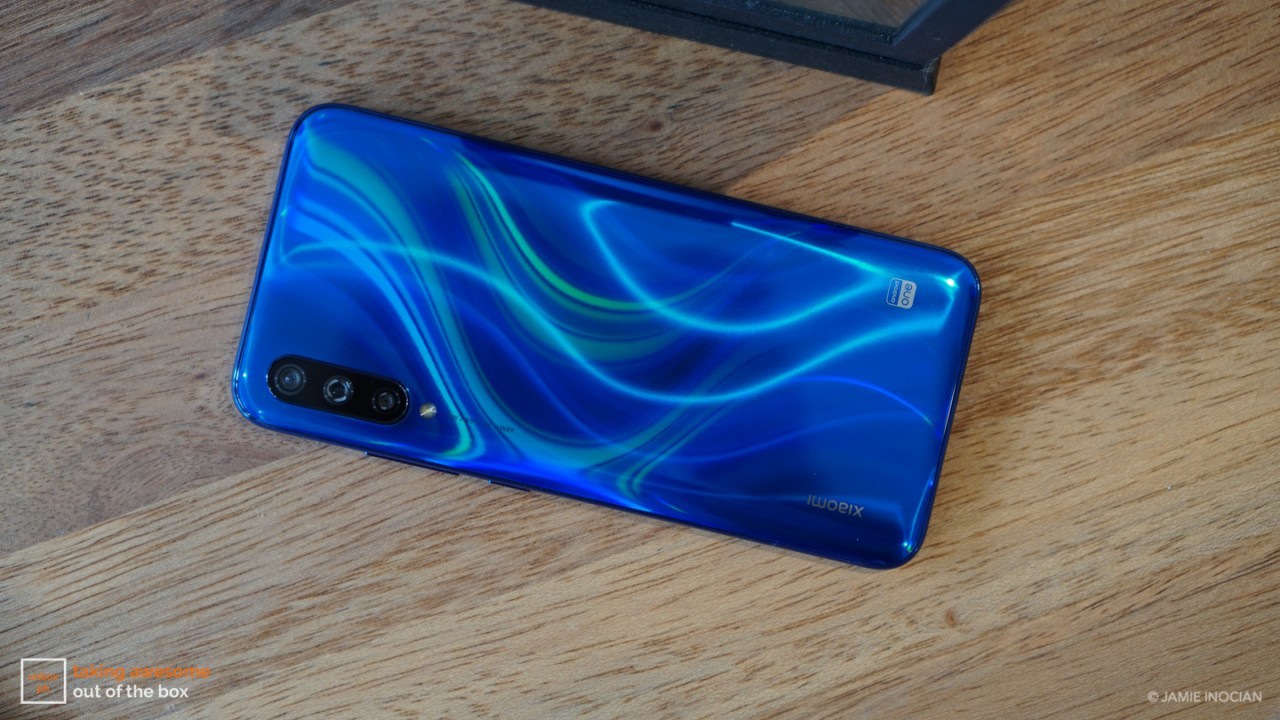
Should you still spend money on Android One phones?
Xiaomi’s Mi CC9e has finally arrived in the Philippines, clothed in Android One and sold as the Mi A3. Xiaomi has followed roughly the same formula in 2019 as they did two years previously: pluck a fairly good bang-for-the-buck phone from their lineup, strip out MIUI and replace it with pure Android.
And the formula has mostly worked – people who weren’t fans of their UI bought the mid-range phones thanks to the promise of unadulterated Android via Android One and guaranteed two-year updates for the mobile OS.
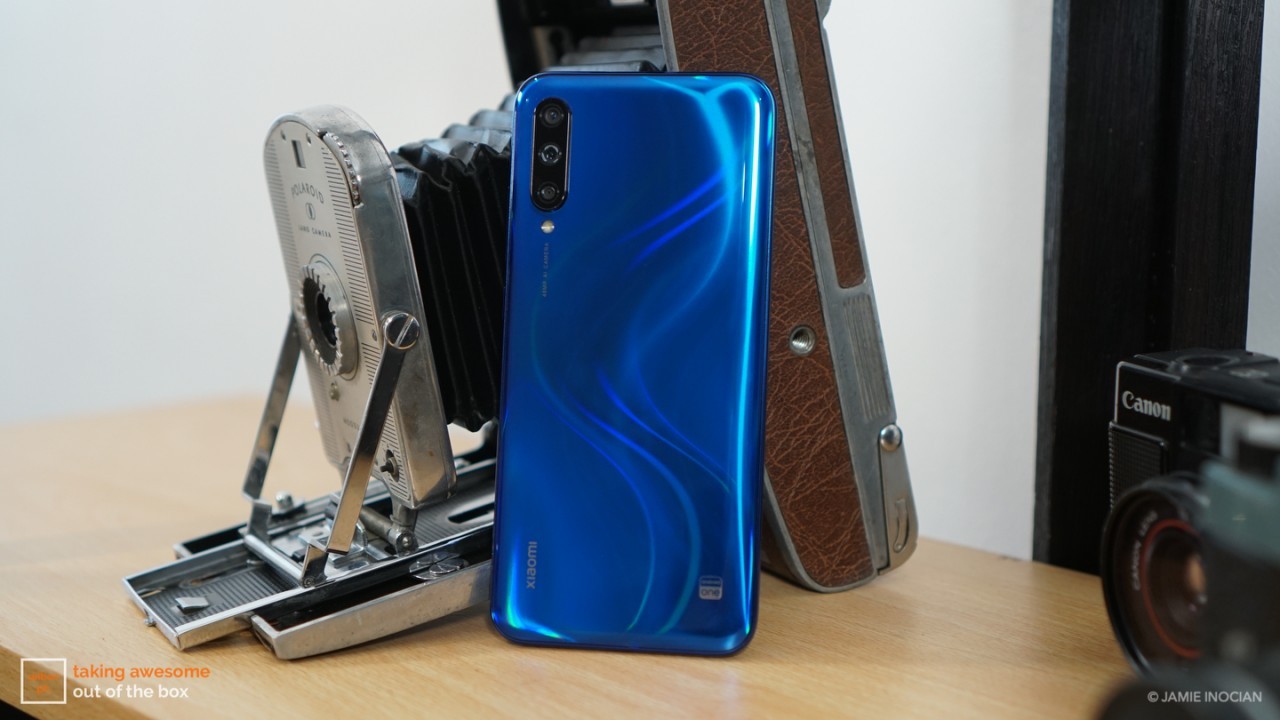
Prettiest Android One phone yet
Xiaomi really went all out in the design of the Mi A3, at least for the Not Just Blue version that we got in for review. The glass panel on the rear has a pretty gradient pattern that shifts its color subtly when light hits it, giving you more eye candy if you decide not to run a silicone case on the back.

The frame is made of aluminum, and both the front and glass panels are covered by Gorilla Glass 5 for an extra layer of protection.
The triple camera module is arranged vertically and is made up of a 48-megapixel high-resolution sensor with an f/1.8 aperture lens, 8-megapixel ultra-wide sensor with a f/2.2 aperture lens, and a 2-megapixel f/2.4 depth sensor.
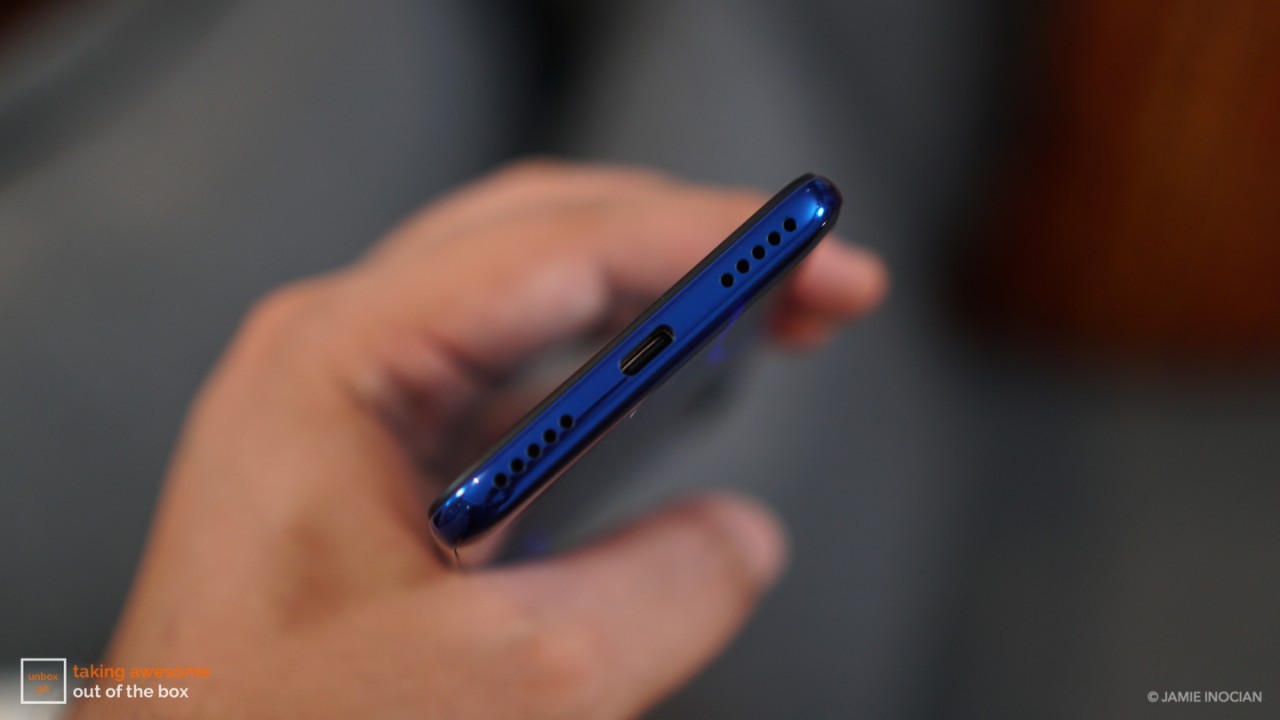
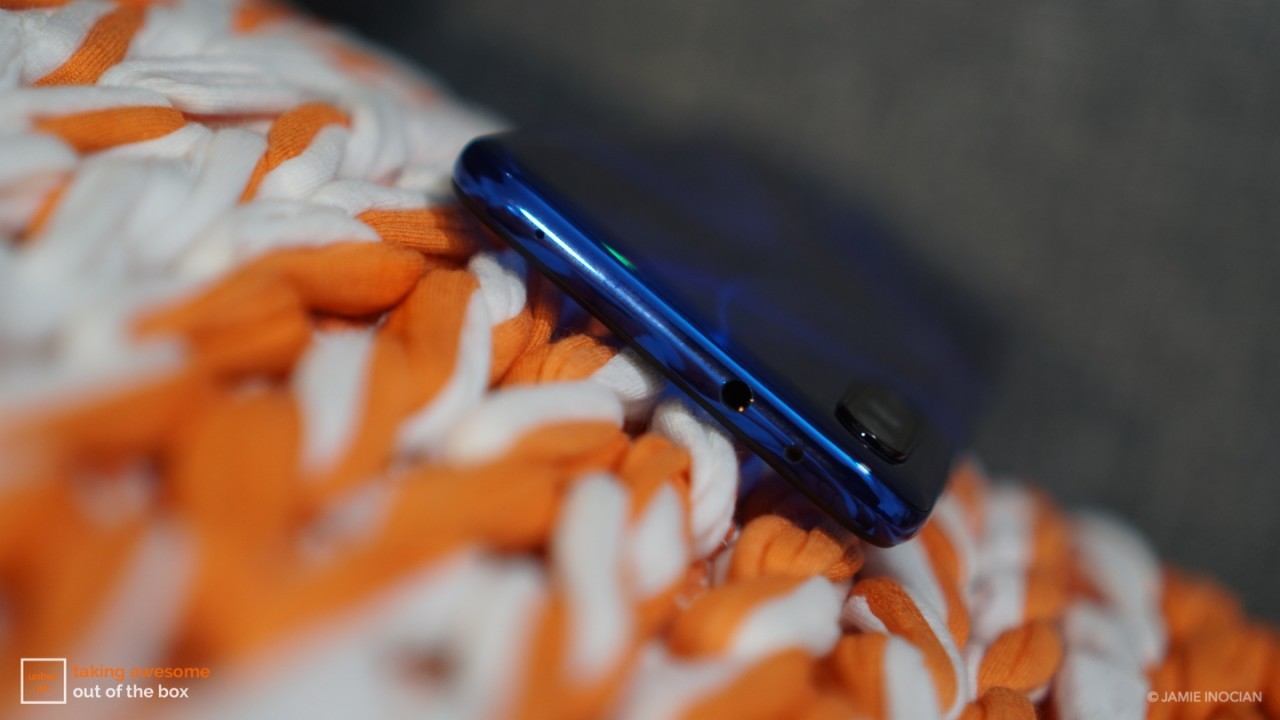
The power and volume rocker is on the right side, with the 3.5mm jack on the top. The bottom holds the speaker grille, which flanks the USB Type-C connector.
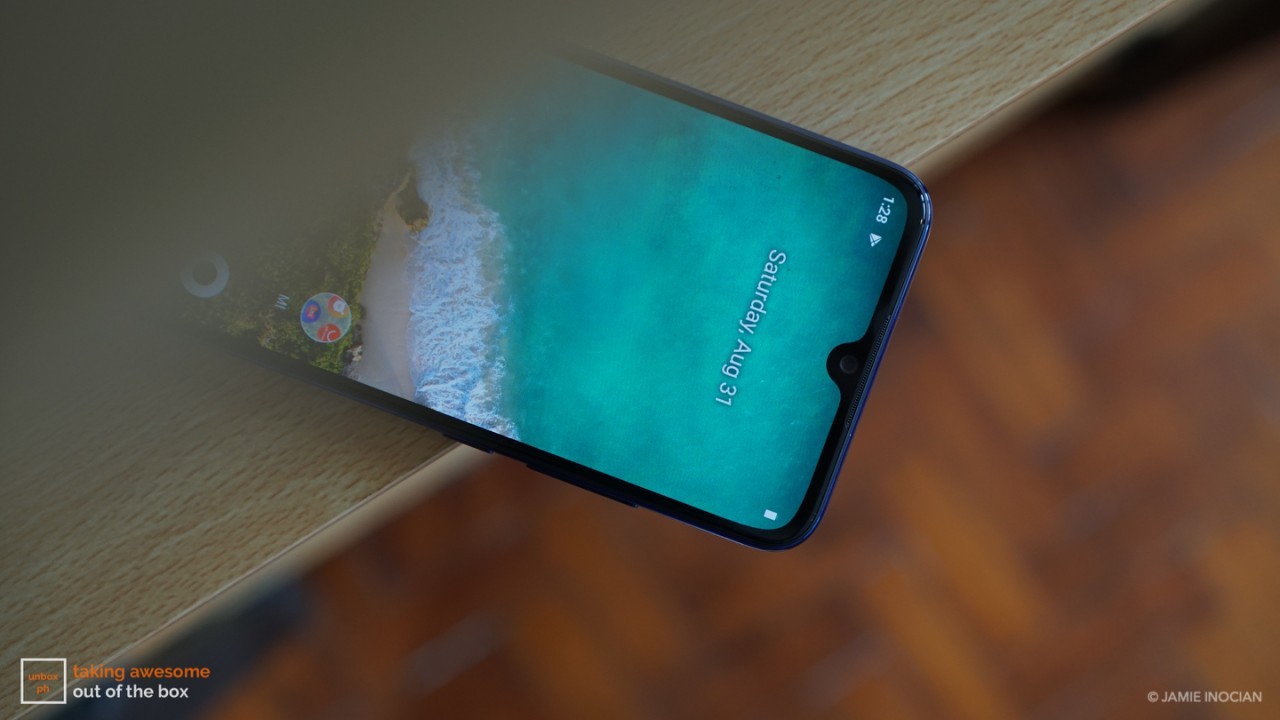
The phone uses a Super AMOLED capacitive touchscreen that measures a hair over 6 inches (6.08-inches, to be exact) along with a 19.5:9 aspect ratio, thanks to the dewdrop notch that houses the 32-megapixel f/2.0 aperture selfie camera.
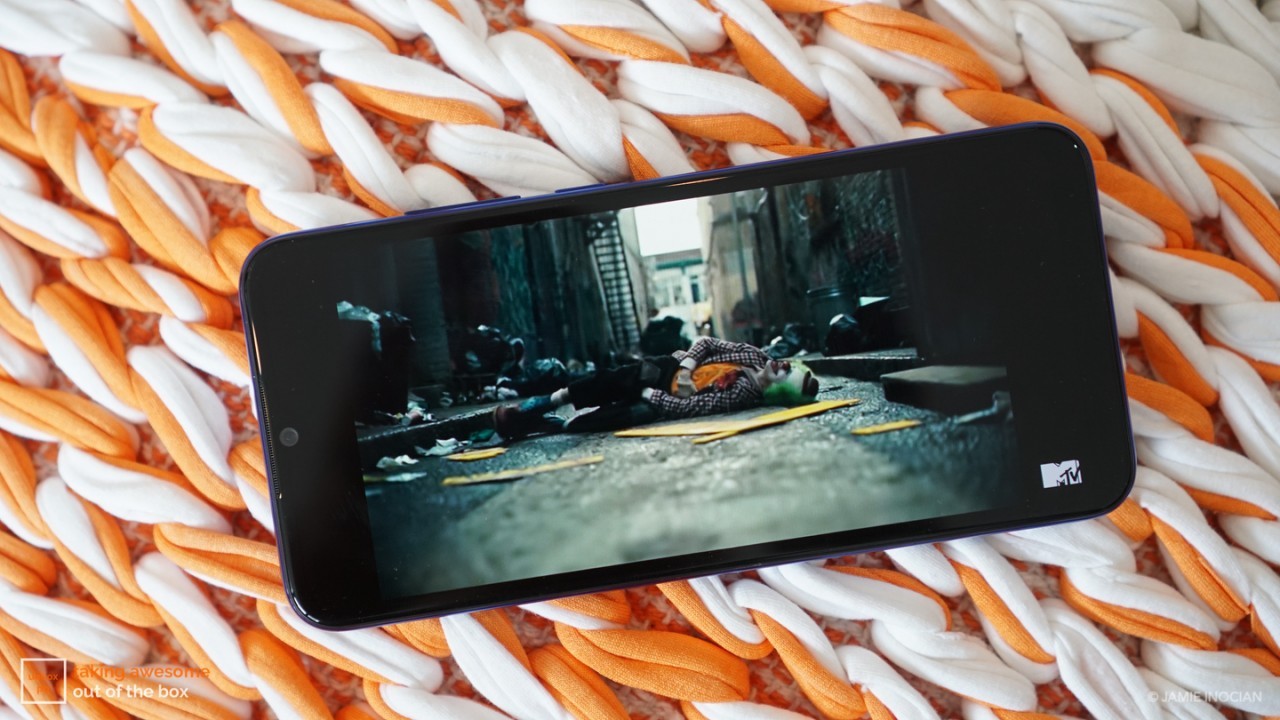
The display isn’t the crispiest in the world, since the resolution is just HD+, though it’ll do for a phone the size of the Mi A3.
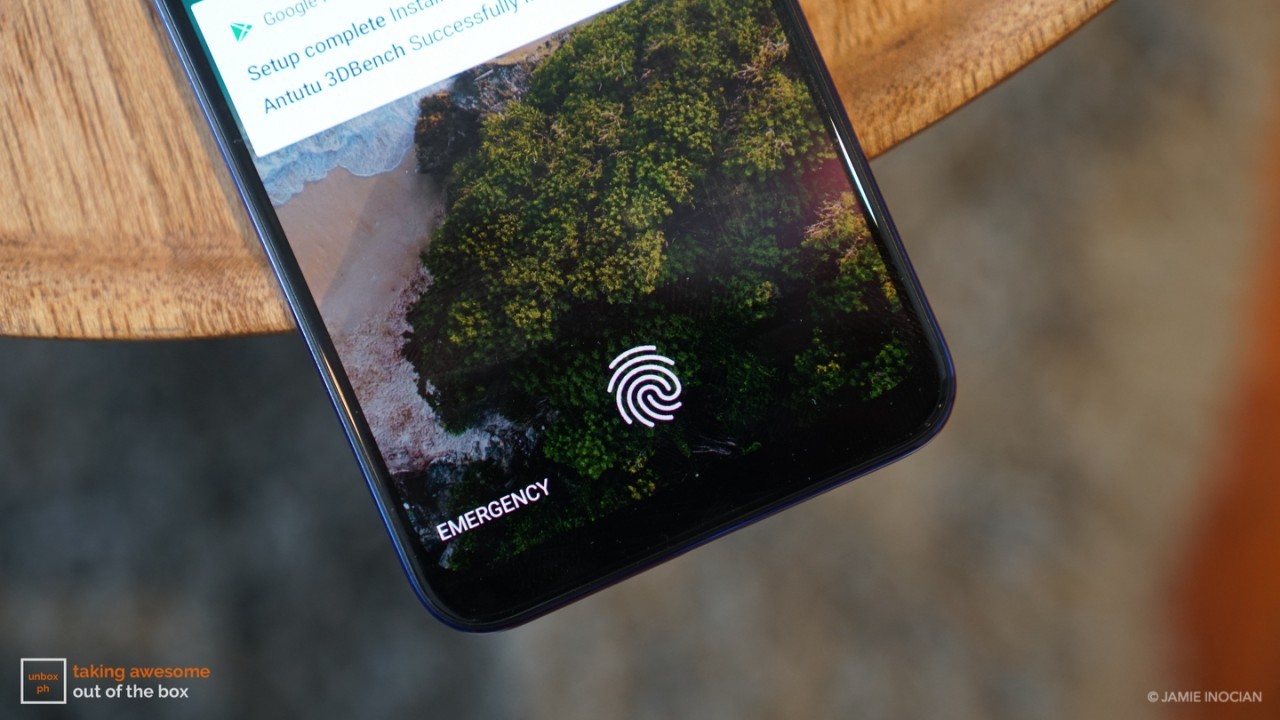
There’s also an under-display fingerprint scanner built into the Mi A3 but it’s not the best in the world – we had trouble using it during the first few hours that the phone was with us.
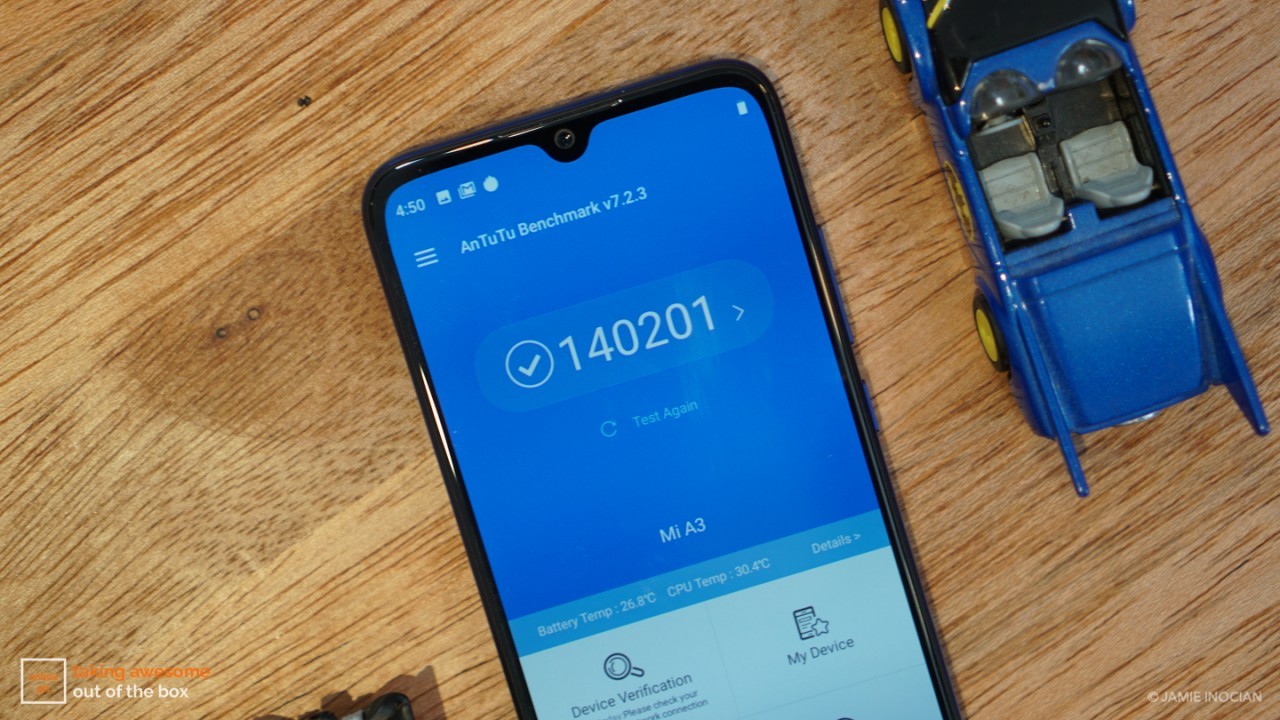
Under the hood runs Qualcomm’s Snapdragon 665 processor, paired with 4GB of RAM and 128GB of storage. Qualcomm’s SD 665 processor is a proven mid-range workhorse, though we’ve seen comparably priced smartphones that rock the company’s SD 710 chipset.
That being said, the SD 665 is good enough for a large majority of the population, delivering good performance in daily tasks. Thanks to pure Android the phone doesn’t have a lot of bloatware to begin with which helps quite a bit in keeping the experience fast and fluid.
The Mi A3 has a rather large 4030mAh battery inside of it which should keep it chugging for quite a bit before you have to charge it. 18W quick charging will get it back up and running if you ever drain down the battery to 0.
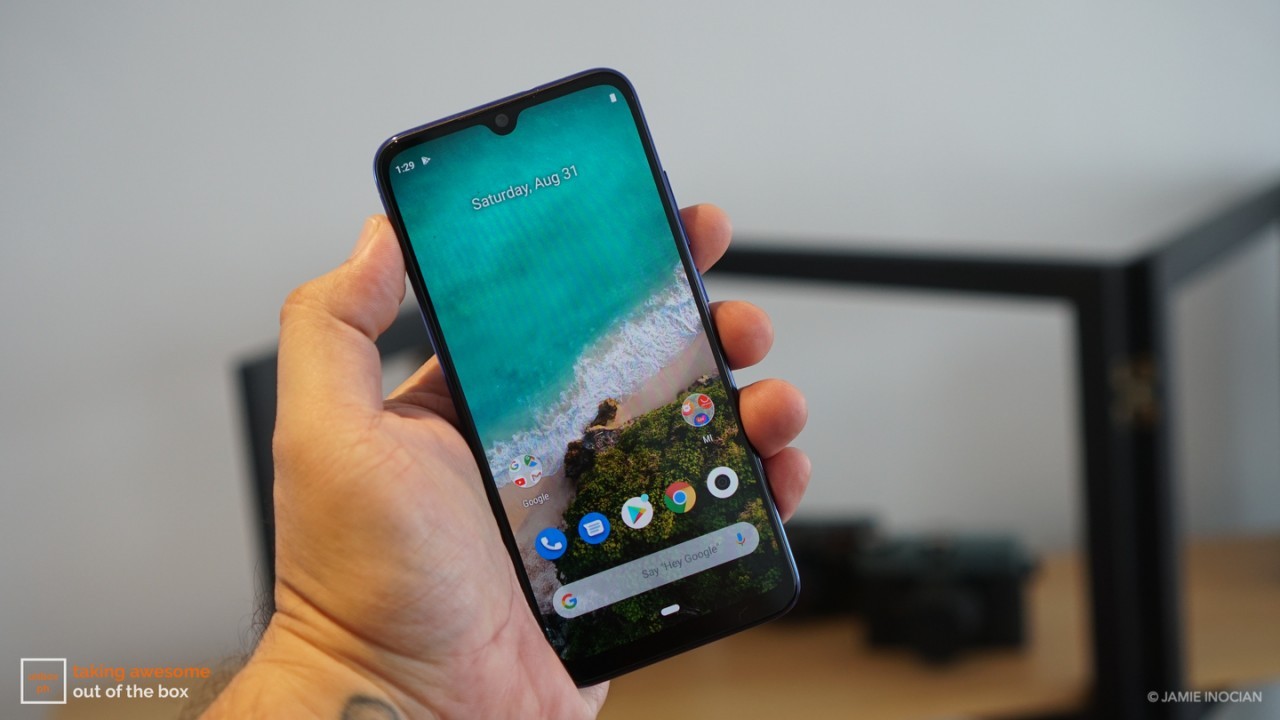
Xiaomi is selling the Mi A3 at Php 11,990 for the 4GB/128GB model, which is pretty reasonable, though you are paying a bit more for the Android One experience. We’ll be putting the phone through our review process and will have our full review up in a week or so.
Xiaomi Mi A3 specs
- Qualcomm Snapdragon 665 octa-core processor
- Adreno 610 GPU
- 4GB RAM
- 6.088-inch HD+ AMOLED display
- 128GB internal storage
- Triple rear camera setup: 48-megapixel f/1.75 main camera; 8-megapixel secondary camera; 2-megapixel depth camera, Dual Pixel and Laser Autofocus, dual-tone flash, AI scene detection, and AI portrait
- 32-megapixel f/2.0 front camera
- Dual SIM, with 4G LTE, LTE-A
- Dual Frequency GPS, GLONASS
- WiFi, Bluetooth 5.0, NFC
- In-display Fingerprint scanner, USB-C, Reading Mode 2.0, Game Turbo
- 4030mAh battery with 18W Quick Charging
- Android Pie (Android One)






